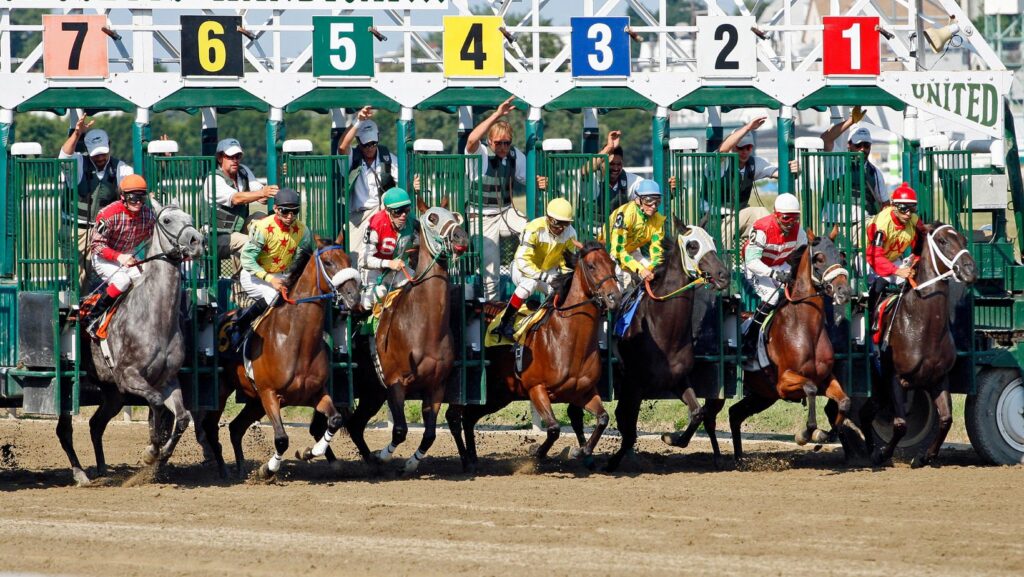
Horse racing, or ‘the sport of kings’ as it’s popularly known really does have a regal heritage. Legend has it that the UK base of the sport in Newmarket was first established at the command of James 1st in the early 17th century as a diversion for when his favored pursuit, hunting, was not possible.
Since then, the British royal family has been heavily involved in the sport, owning many horses and winning many races with them.
The sport itself has grown into a multi-billion dollar industry worldwide that is enjoyed by a hugely diverse range of fans.
Besides being a captivating sport to watch, it is also very important economically.
Not only does it employ thousands upon thousands of people directly, whether in the training of horses, the running of racecourses, or involvement in the horse betting industry, but there are even more whose livelihoods depend on it indirectly.
Since the advent of legalized betting in the US, it has become even more popular both in the States and all around the world. This has meant there has been a great drive for investment in various areas of the sport. For race courses themselves, this has been a particularly pressing matter as more people are following the trend of watching it online rather than actually attending the meetings themselves.
Enhanced Facilities
Another reason for this is that, around the world, many courses are starting to show their age slightly. At a time when other sports are enhancing their facilities with new stadiums many courses are receiving investment to enhance the visitor experience.
For example, at the legendary Churchill Downs, home of the Kentucky Derby, it’s nearing the completion of a $200 million program that includes a new paddock as well as improved hospitality suites for corporate use.

The fact that these changes are all due to be completed in time for the 150th running of the legendary race this year makes them all the more timelyl.
Over in the UK York racecourse in the north of England is already one of the finest in the country. A few years ago when Ascot was undergoing its own transformation it was where Royal Ascot relocated to for the year.
In order to be able to accommodate up to 22 horses in each race, the owners of the course have just spent an undisclosed six-figure sum on a new set of stalls made by specialists in Australia and shipped halfway across the world. The reasoning behind the move is that extra horses make for more exciting racing – as well as generating extra entrance fees for participation in a race.
Prize Funds Are Getting Bigger.
As anyone who has dabbled will tell you, horse racing is a very expensive business to be involved in. Perhaps not quite as expensive as yacht racing, which was once described by some wag as “standing in a cold shower and tearing up $100 bills” – but expensive all the same.
So to keep the sport afloat, prize money is also steadily on the rise. The biggest increases have been made in the most important races. So, while the prize money for the Melbourne Cup was $7.3 million in 2019, last year’s figure was $8 million, making it the world’s richest race by a considerable margin.
The involvement of several countries in the Middle East in horse racing has also long proved to be important in its financing. A prime example comes with the sponsorship of France’s Prix de L’Arc de Triomphe. Ever since sponsorship was taken over by the Qatar Racing and Equestrian Club, the prize money was able to be boosted from 2 million euros to 5 million – a considerable increase by anyone’s reckoning.
Now Anyone Can Have A Share In A Horse.
While it might sound from these examples that you need huge wealth to invest in the sport, this isn’t 100% true. In recent years there has been a rise in so-called fractional ownership. Working through intermediaries like My Racehorse it’s now possible to spend as little as $100 to own a small share in a horse.

One of the highest-profile success stories so far has been the horse Authentic – winner of the 2020 Kentucky Derby. And, while you might not enjoy this level of success, there are plenty of horses out there capable of winning lesser races and generating a return.
Could Another Racecourse Bond Be The Future?
Back in 2013, the UK’s Jockey Club even launched a savings bond that used the money invested in it to raise £25 million, which was then spent on improving the facilities at Cheltenham racecourse, home of the famous March festival each year.
It proved to be such a success that it would be surprising if a similar method doesn’t appear again in the near future.
In fact, it might even be a racing certainty.



